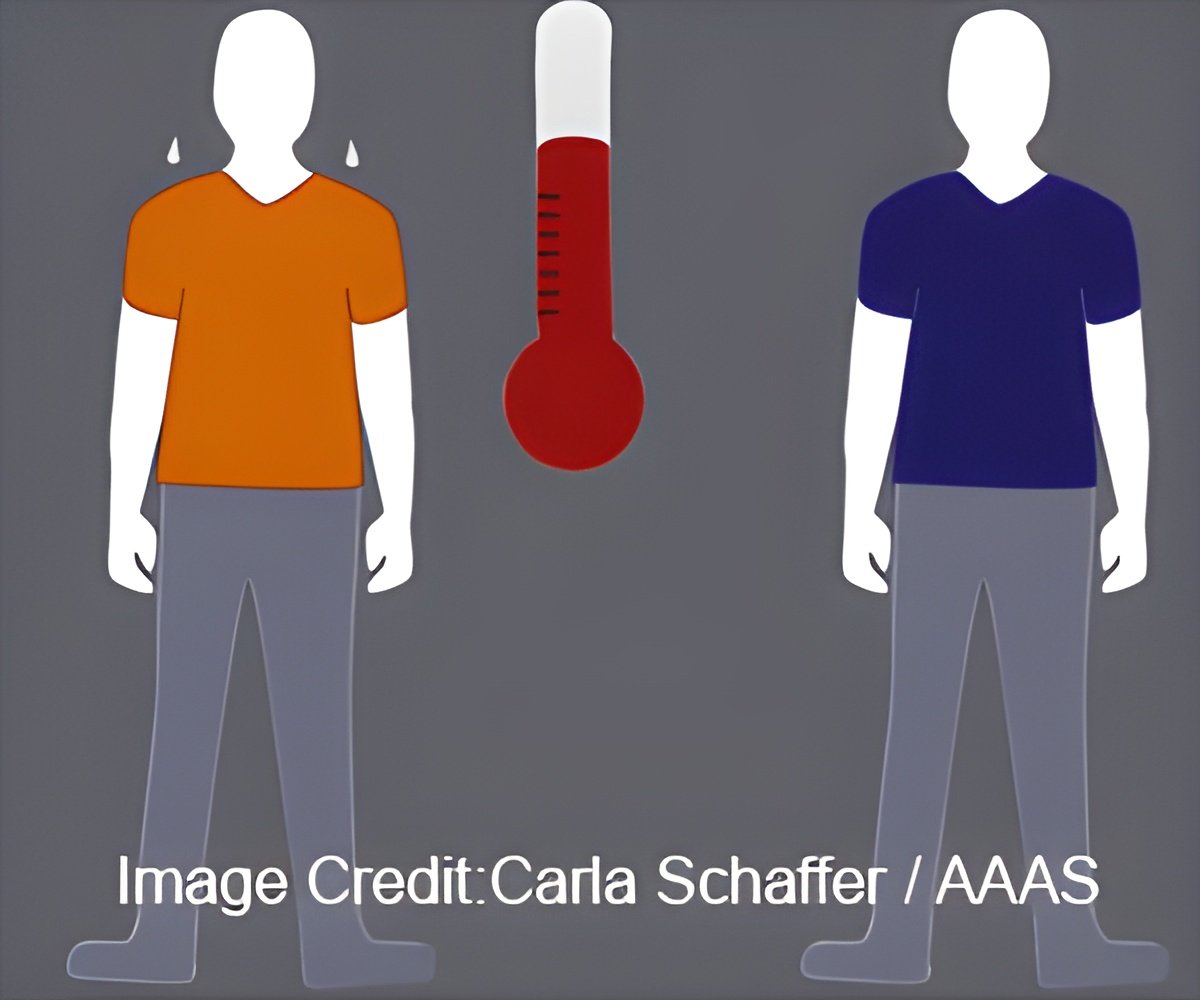
Therefore, cloth that blocks visible light often traps in body heat. Here, Po-Chun Hsu, Yi Cui and colleagues explored an existing nanoporous polyethylene (nanoPE), evaluating whether it would allow IR-radiation to pass through, and thus make a likely cool clothing candidate. NanoPE has interconnected pores that are 50 to 1000 nanometers in diameter, comparable in size to the wavelength of visible light, and thus capable of scattering it, or reflecting it back.
Yet, at these sizes, the pores are much smaller than the wavelength of infrared light, meaning nanoPE is still highly transparent to IR. The team tested nanoPE and cotton, finding the former to allow 96% of IR to pass through, compared to its cotton counterpart, which only permitted the passage of 1.5% of infrared waves. Regular polyethylene lets similar amounts of IR through, but the nanoPE significantly outperforms this traditional cloth in reflecting visible light, at 99% opacity compared to 20%.
In experiments with a device that mimics the heat output of human skin, the authors found that nanoPE only heats the simulated skin temperature by 0.8°C, compared with a heat boost of 3.5°C for cotton and 2.9°C for commercially available polyethylene fabrics.
What's more, whereas normal polyethylene does not wick away moisture well, here, the researchers were able to enhance fluid wicking of the nanoPE using a microneedle punching technique and by coating the material with a water-repellent agent. In a related Perspective, Svetlana Boriskina highlights how this new material could reduce energy costs associated with keeping body temperatures cool (i.e., air conditioning costs), and it could even be used to address the thermal management of tents, buildings, and vehicles.
Source-Eurekalert









